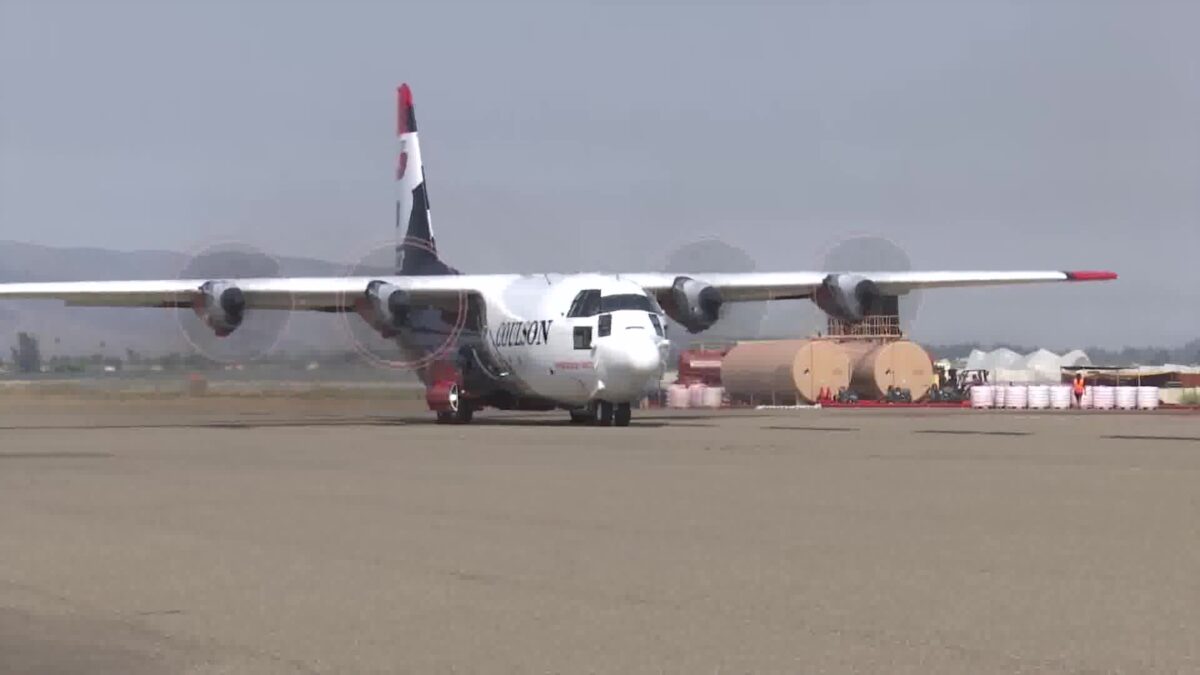Santa Maria Air Tanker Base providing valuable support in battling the Gifford Fire

Dave Alley
SANTA MARIA, Calif. – With the Gifford Fire burning just a few miles away east of Santa Maria, the Santa Maria Air Tanker Base is providing valuable support in the ongoing firefighting effort.
Since the fire broke out along Highway 166 on Friday afternoon, the base has been a whirlwind of activity with several air tankers and helicopters flying in and out on a repeated basis.
“We do have a lot of activity here,” said air tanker captain Dawn Blumberg. “It seems kind of chaos, but it’s more like orchestrated music.”
With the Gifford Fire burning in some of the most rugged and remote wilderness landscape on the Central Coast, having firefighting support from the sky is a crucial element in the difficult battle to put out the flames.
“The fire is burning in areas where it’s incredibly steep and difficult terrain to access for firefighters on the ground, so the importance of the tanker base here and the proximity to the fire line is enormous,” said Andrew Madsen, Los Padres National Forest Public Information Officer. “The retardant being dropped is in areas that are inaccessible to crews on the ground, so it’s very important that we can help to try to slow the advance of the front.”
The Santa Maria Air Tanker Base is located on southern edge of the Santa Maria Airport, housed within the Central Coast Jet Center.
The base serves as an important station for firefighting aerial operations for incidents that take place not just on the Central Coast or the around California, but throughout the Western United States.
What makes the Gifford Fire unusual, as was the same for the recent Madre Fire that also burned around the Highway 166 area, is the close proximity of the fire lines to the base.
“With the Gifford Fire being so close to the air tanker base, we’re actually able to see the fire from the air tanker base, which is kind of rare,” Santa Maria Air Tanker Base Manager Miguel Quiz. “It makes turnaround times for the aircraft faster than usual. The tempo here has picked up pretty quick, but it also allows us to get more retardant to the fire and get it there faster. As the tempo picks up, we pick up and and we’re able to deliver a good product.”
Only a handful of miles separates the base from the fire, allowing planes and helicopters to make quick trips back and forth.
“We’re able to turn around in about 10 minutes time to get them reloaded, refueled and back into the air and then onto the drop site,” said Madsen. “The quick turnaround time from the airport here is critical at the current time to help hold the spread of the fire on the flanks where we’re seeing more aggressive fire behavior.”
With the aircraft able to load up and provide drops on the fire and able to return the the base and repeat the pattern within just a matter of minutes, it has provided aerial operations with the ability to drop more retardant than would be allowed if the fire were happening at a more distance location.
“From day one, we’ve been supporting up from about eight to 10 aircraft each day,” said Quiz. “We’ve pumped about 900,000 gallons of retardant so far on this fire, so each day we’re putting out about 150,000 to 200,000 gallons of retardant a day. We’ve gotten in a pretty good tempo and a pretty good flow of moving aircraft around and getting them to the fire in a good, timely manner.”
The Latest Breaking News, Weather Alerts, Sports and More Anytime On Our Mobile Apps. Keep Up With the Latest Articles by Signing Up for the News Channel 3-12 Newsletter.